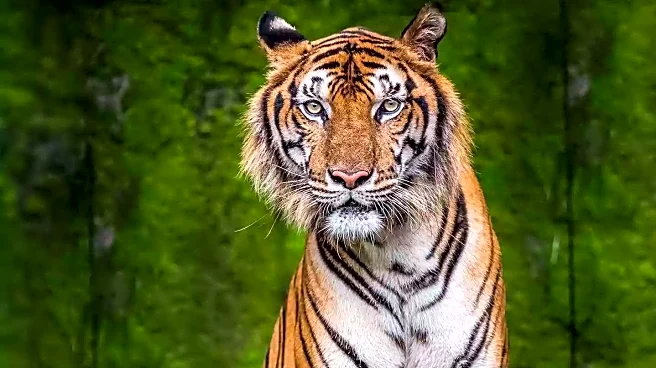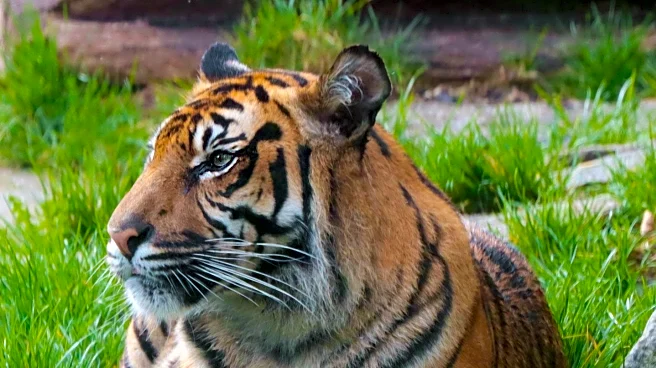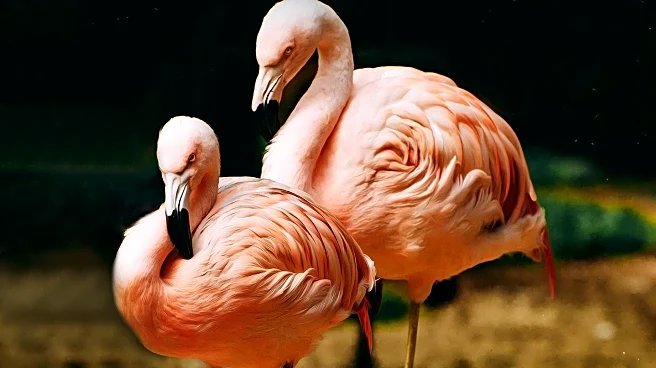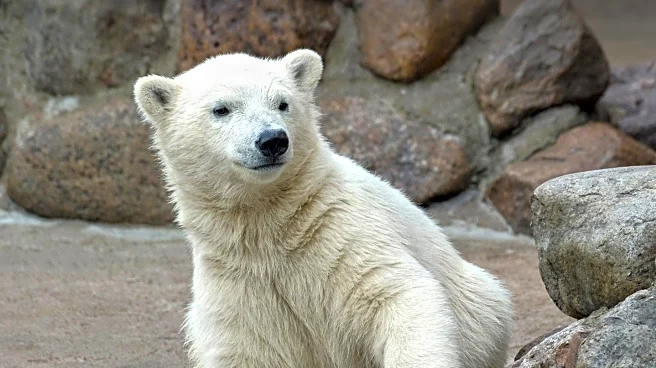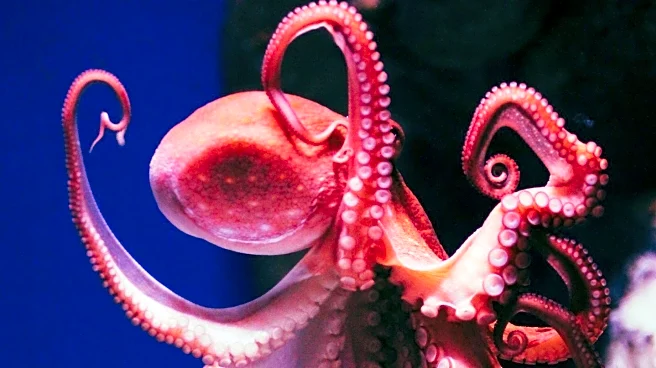What is the story about?
What's Happening?
Katya, a 20-year-old female Amur tiger at Seneca Park Zoo, has been diagnosed with early-stage chronic kidney disease. The zoo announced the diagnosis on September 12, highlighting that Katya is the oldest Amur tiger in any zoo accredited by the Association of Zoos and Aquariums. Chronic kidney disease is a common condition in aging cats, including domestic felines. The condition can progress quickly or slowly, depending on the individual. Zoo veterinarian Dr. Chris McKinney noted that Katya's condition was identified early through routine bloodwork, and she is currently active and showing no outward signs of illness. Katya is receiving increased monitoring and regular subcutaneous fluids to support her kidneys. Additionally, she is being treated for a noncancerous bladder tumor, which is unrelated to her kidney disease.
Why It's Important?
The diagnosis of chronic kidney disease in Katya underscores the challenges faced by aging animals in captivity, particularly those of critically endangered species like the Amur tiger. With fewer than 500 Amur tigers remaining in their natural habitat, primarily in Eastern Russia, the health and longevity of individuals in zoos are crucial for conservation efforts. Early detection and treatment of health issues can improve the quality of life and potentially extend the lifespan of these animals. The zoo's proactive approach in monitoring and treating Katya's condition reflects the importance of veterinary care in preserving endangered species.
What's Next?
Seneca Park Zoo will continue to monitor Katya's health closely, providing regular treatments to manage her kidney disease and bladder tumor. The zoo's veterinary team will focus on maintaining her hydration and monitoring her blood pressure. As Katya is a significant member of the zoo's collection, her health will be a priority, and any changes in her condition will be addressed promptly. The zoo may also use Katya's case to educate the public about the challenges faced by endangered species and the importance of conservation efforts.
Beyond the Headlines
Katya's diagnosis highlights the broader issue of health management in captive animals, particularly those of endangered species. It raises questions about the ethical responsibilities of zoos in providing optimal care and the role of such institutions in conservation. The case may prompt discussions on the balance between captivity and natural habitats for endangered species, considering the potential benefits and drawbacks of each environment.
AI Generated Content
Do you find this article useful?
